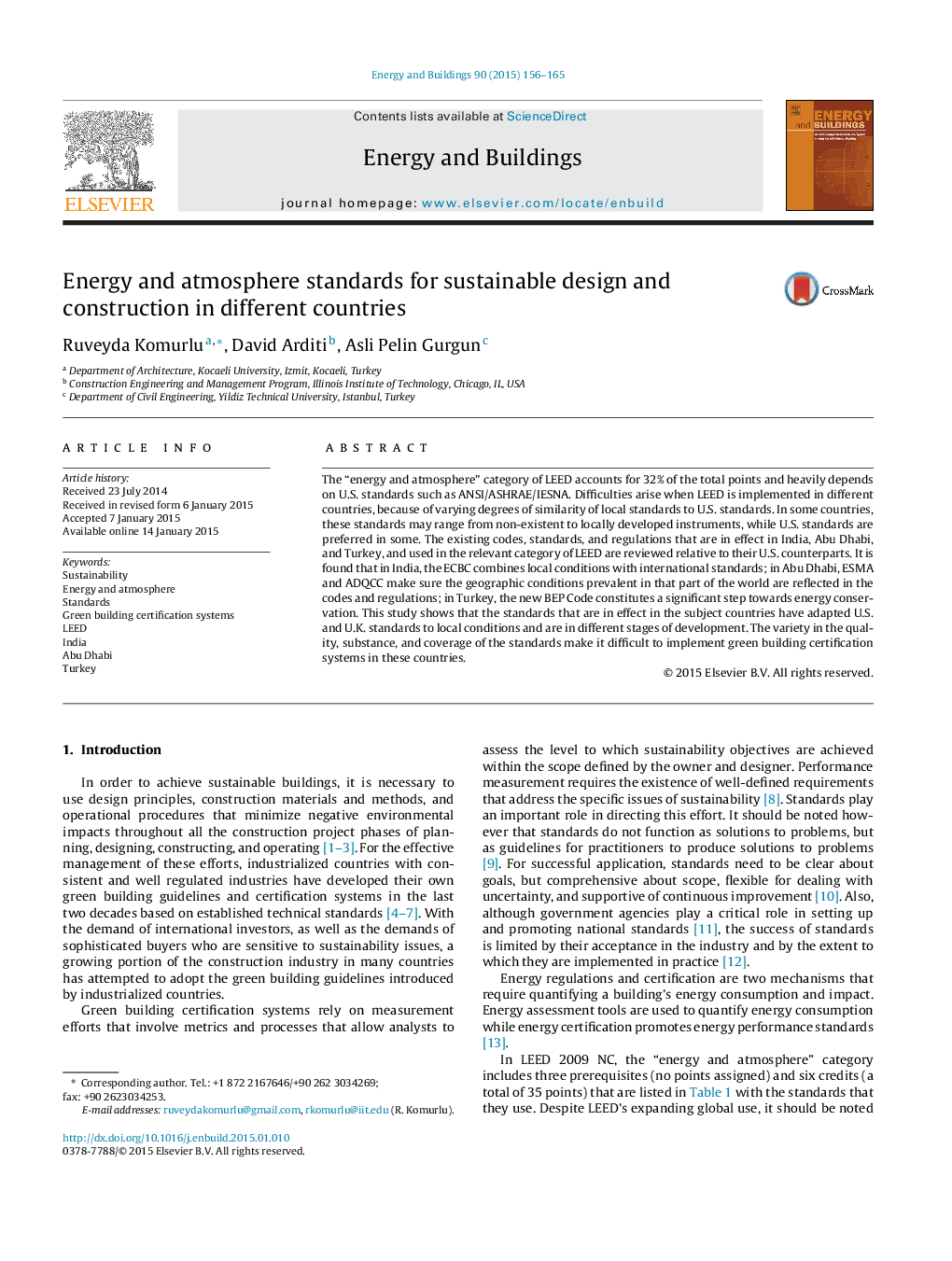| Article ID | Journal | Published Year | Pages | File Type |
|---|---|---|---|---|
| 262614 | Energy and Buildings | 2015 | 10 Pages |
•It is difficult to implement LEED in countries where US standards are not in use.•Introducing universal standards is challenging and likely to be impractical.•India, Abu Dhabi and Turkey developed standards with different levels of maturity.•These developments can function as guidelines for other countries.
The “energy and atmosphere” category of LEED accounts for 32% of the total points and heavily depends on U.S. standards such as ANSI/ASHRAE/IESNA. Difficulties arise when LEED is implemented in different countries, because of varying degrees of similarity of local standards to U.S. standards. In some countries, these standards may range from non-existent to locally developed instruments, while U.S. standards are preferred in some. The existing codes, standards, and regulations that are in effect in India, Abu Dhabi, and Turkey, and used in the relevant category of LEED are reviewed relative to their U.S. counterparts. It is found that in India, the ECBC combines local conditions with international standards; in Abu Dhabi, ESMA and ADQCC make sure the geographic conditions prevalent in that part of the world are reflected in the codes and regulations; in Turkey, the new BEP Code constitutes a significant step towards energy conservation. This study shows that the standards that are in effect in the subject countries have adapted U.S. and U.K. standards to local conditions and are in different stages of development. The variety in the quality, substance, and coverage of the standards make it difficult to implement green building certification systems in these countries.
